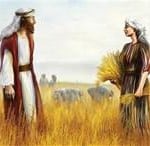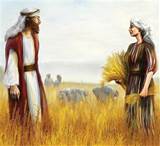by Rabbi Lord Jonathan Sacks
The meaning of tikkun and its connection to Shavuot.
]
Excerpted from the Koren Shavuot Mahzor with introduction by Rabbi Lord Jonathan Sacks
The word tikkun, as in tikkun olam, “mending the world,” and tikkun leyl Shavuot, the custom of staying up and studying Torah all night on the first night of the festival, has a curious history. In mishnaic Hebrew, that is, until the third century, it meant no more than social order, the rules that made society a safe and predictable place. In Jewish mysticism it came to mean something more metaphysical: mending the fractures in the universe that made life on earth so full of suffering and injustice, chief symbol of which was the Jewish condition in exile.
This had to do with the fact, according to Rabbi Isaac Luria, the great mystic of the sixteenth century, that something had gone wrong with creation itself. The divine light of the first day of creation had proved too intense for the physical vehicles meant to contain it. The vessels had shattered, leaving debris and fragments of light scattered everywhere. Ours is, said the mystics, a broken world, and the fractures are so deep that they affect the Divine being itself.
Exile is not just a human phenomenon. It represents a rift between God as He is in himself – the Infinite, the Ein Sof, the Without-End – and the Shekhinah, the Divine presence, God as he is among us. When Jews went into exile, the Shekhinah went with them. So we have, by our mystical endeavors, to help heal the fractures in the Divine. Every religious act if done with sufficient intensity of mind and soul, does something to reunite the Holy One, blessed be He, and His immanent Presence.
There is, though, a third sense of tikkun that is not mystical at all but makes powerful sense in terms of the Jewish vision of the world. Bad things happen between people. The innocent are harmed. There is envy, jealousy, anger, resentment. There is injustice, oppression, exploitation. The human world is full of tears. If you believe, as polytheists did in the ancient world and some atheists do today, that life is essentially conflict, a Darwinian struggle to survive, then there is nothing odd about a world full of pain. That is how it is. There is no right; only might. Justice is whatever serves the interests of the strong. History is written by the victors. The victims are mere collateral damage of the fight to impose our will on the world or, in the language of the neo-Darwinians, to hand on our genes to the next generation.
That, though, is not how Jews understand it. The natural condition of the world is harmony, like a well-ordered garden or a loving family or a gracious society. That is how it was in the beginning when God made the universe and saw that it was good. God, though, gave humans freedom, and humans often use that freedom to disobey Him. God creates order. We create chaos. That is, or would be, the human tragedy if Jews believed in tragedy. But we do not. We believe in hope, and hope has the power to defeat tragedy – as we have the power to mend what we or others have broken.
That is the philosophy that lies behind the central Jewish idea of teshuvah, meaning “repentance” or “return.” Through teshuvah, we can heal some of the pain we or others have created. Though the concept of teshuvah does not figure explicitly in the stories of Genesis, it is there nonetheless beneath the surface. Broken relationships are mended. Ishmael, Abraham’s child by the slave-woman Hagar, was sent away when he was young, yet we see him standing together with his half-brother Isaac at Abraham’s grave. Jacob and Esau, divided by Jacob’s act of taking Esau’s blessing, meet twenty-two years later and embrace with no trace of lingering resentment. Joseph forgives his brothers who sold him into slavery. Genesis ends on a note of reconciliation. There are wounds that can be healed.
Neither Tanakh nor the rabbis, nor even the mystics, called this tikkun, but that is what it is: the intensely human ability to repair damaged relationships and restore order to the social world. But what if the moment passes? What if those who did the damage and those who suffered it, are no longer alive? Can what we do in the present mend something broken long ago, before our time? That is one of the subtexts of the book of Ruth, and it applies to two people: Ruth herself, and Boaz…
Ruth, in her life and by her example, performs a tikkun. Though there is no element of teshuva involved, the verb shuv, in the sense of “return,” appears 13 times in the book. Something has been healed. By her conduct and character, she shows that not all Moabites lack kindness.
They, too, ultimately come from the same family, that of Teraĥ, as Abraham himself. Ruth has redeemed something of the past. Reuniting two long separated branches of the family, her great-grandson became the person who united the nation. That is tikkun. By our acts in the present we can heal some of the wounds in the past.
(For the full explanation about Ruth and Boaz, see the Koren Shavuot Mahzor. )

Rabbi Lord Jonathan Sacks is a British rabbi, philosopher and scholar of Judaism. He served as the Chief Rabbi of the United Hebrew Congregations of the Commonwealth for twenty-years. Recipient of the prestigious Templeton Prize, Rabbi Sacks is the author of Covenant & Conversation, Lessons and Leadership, and has written the translation and commentary for the Koren Sacks Siddur and Mahzor Series. The latest in the series is the Koren Sacks Shavuot Mahzor.
